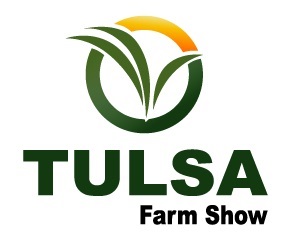
With the government finally reopening, the agricultural sector is bracing for a flood of data next week. Todd Hubbs Previews Post-Shutdown USDA Reports and Grain Market Outlook.
Oklahoma State University Crop Marketing Specialist, Dr. Todd Hubbs, says the USDA is set to play catch-up starting this Friday, November 14, with the release of the highly anticipated WASDE and Crop Production reports.
Speaking with Farm Director KC Sheperd, Hubbs outlined what producers should expect as the data begins to flow again and provided an outlook for Oklahoma’s key commodities.
📉 The Data Deluge: What to Expect
Hubbs confirmed that while the WASDE and Crop Production reports will drop on Friday, the USDA will likely release other backlog data, such as export sales, gradually over the coming months.
“It’s been reported that the export sales data will be coming out gradually… as they catch up,” Hubbs noted. He explained that while crop analysts can return to work and produce reports quickly, other metrics like census and trade data take longer to update.
🌾 Wheat: “Bumping Along”
The wheat market has been “bumping along” this week, largely in a holding pattern while traders await Friday’s data. Hubbs noted that while the USDA had previously issued strong forecasts for major global wheat producers, he expects they might raise global production numbers slightly.
“Ending stocks might come up slightly, but it won’t be a huge jump,” Hubbs said. Domestically, he expects the balance sheet to add roughly 25 million bushels to ending stocks, reflecting higher production numbers from the Small Grains Summary in September.
🌽 Corn: Yield Drop Likely, But Price Capped
For corn, Hubbs warns that the September stocks report was “pretty bearish for demand,” which may force the USDA to lower its feed and residual numbers for the previous year.
“I think there’s an expectation of a lower yield for corn. I have one,” Hubbs stated. However, he believes that even if the yield drops by two bushels—erasing roughly 180 million bushels of production—the USDA has “plenty of space” to adjust feed and residual demand to offset the loss. The result? Ending stocks likely won’t change much, keeping a cap on prices despite strong export programs and ethanol grind.
🌱 Soybeans: “Running” on China Hopes
Soybeans have been a bright spot, with prices “running” on the excitement of a potential trade deal with China involving 12 to 25 million metric tons. However, Hubbs remains cautious.
“It’s a little bit worrying that after that deal, the Brazilian price sort of dropped below the U.S. price, and you saw buying out of China in Brazil,” he observed. He advised watching how the biofuels policy and trade uncertainties play out.
📉 Cotton & Sorghum: Tough Sledding
The outlook for cotton remains grim. “It’s just getting destroyed,” Hubbs said bluntly, noting he does not expect significant production number changes to rescue the market. “We’re sort of stuck in the situation we’ve been in.”
For sorghum, the USDA is projecting a high export number (225 million bushels), but China needs to buy aggressively to hit that target. “We’ve seen $1 under basis in a lot of places on sorghum,” Hubbs reported, adding that the crop is currently moving heavily into the domestic ethanol grind rather than export channels.
🌏 The Bottom Line: Waiting on Trade
Hubbs concluded with a mix of realism and optimism. “Markets don’t go down forever, but they don’t go up forever either,” he said.
To see a true turnaround, Hubbs believes the market needs confirmation that the recent trade deals in Asia are resulting in actual buying. “If it does, I think you’re going to see some positivity moving forward.”


















